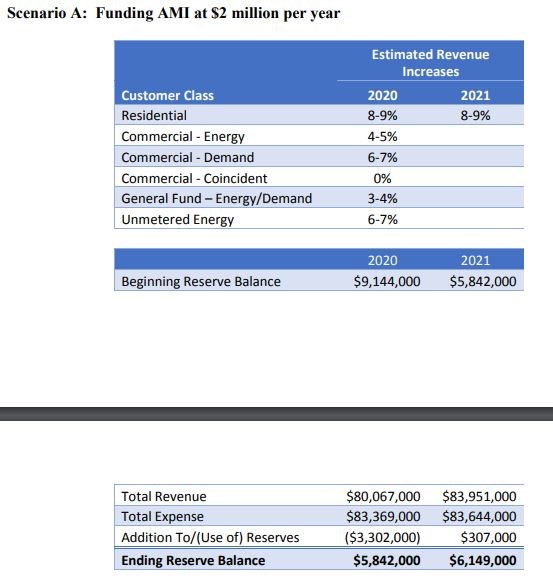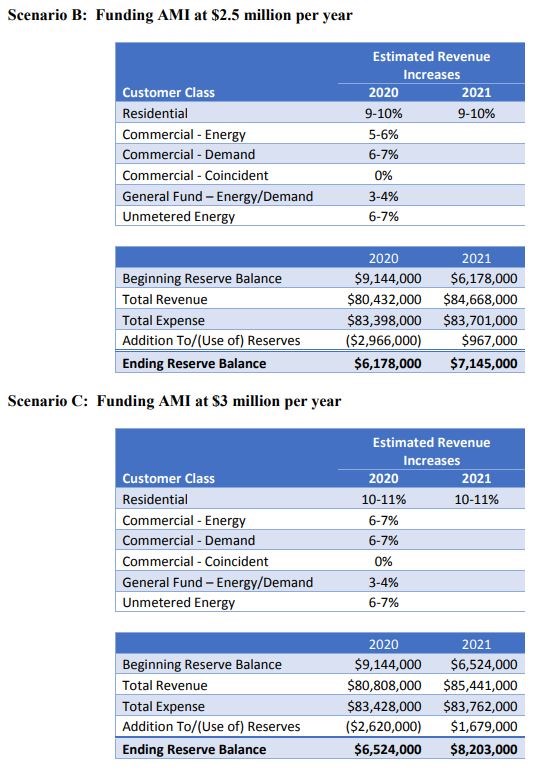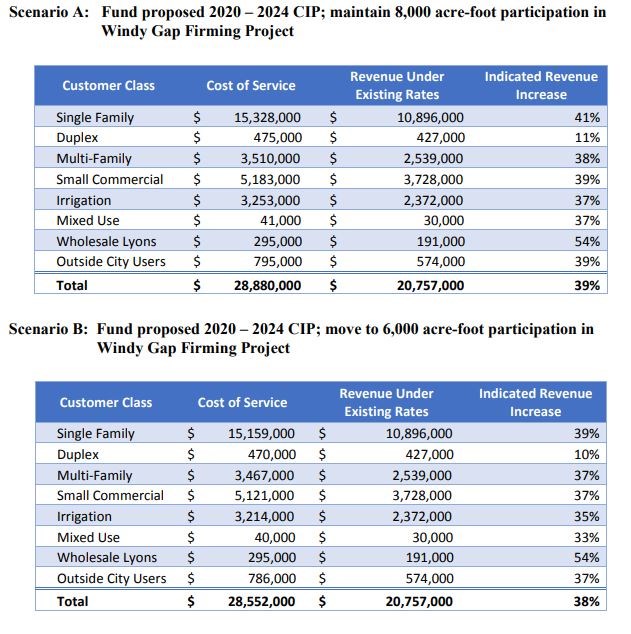This content was originally published by the Longmont Observer and is licensed under a Creative Commons license.
City staff presented Longmont City Council with the results from the cost of service models for electric and water utilities on Tuesday, August 6.
The results indicated that an adjustment of rates was necessary and presented council with options of annual rate adjustments, "which are primarily driven to fund the Advanced Metering Infrastructure (AMI) investment," state city council communication.
"The electric utility is proposing a two-year rate schedule (2020 & 2021). This will allow staff to revisit rate setting for 2022 and beyond to take advantage of renewable sources that continue to increase (beyond 50% of the energy mix), emerging advanced energy monitoring and control technologies (AMI and related), and incorporation into the City’s new Customer Information System (CIS) that is expected to be online late 2021/early 2022," state city council communication.
The model has identified a requirement of $77.3 million, which is an average of the annual estimated expenses in 2020 and 2021. At current electric rates the estimated revenue would be $71.3 million leaving a deficit of $6 million.
In the chart below, city staff have identified the percentage increase per customer class to meet the 8.3% revenue increase needed.

These increases would be expected to be one-time increases with the exception of the residential class. The increase there would be spread over a two-year period.
Major factors affecting the cost of service shown above are:
- $2 million included per year for Advanced Metering Infrastructure (AMI). This is allocated based on the number of electric meters in each customer class.
- $2.3 million for the electric utility’s share of the cost of the new Customer Information System (CIS). This is also allocated based on the number of electric meters in each customer class.
- $2 million for increased wholesale energy costs from PRPA. This increase is due to projected growth of 1% in 2020 & 0.6% in 2021 in combination with expected wholesale energy rate increases of 1.1% for 2020 & 2% for 2021.
Since 88% of the city's electric meters serve the residential rate class, it is the most impacted by the AMI and CIS costs.
The chart below shows the impacts on the residential rate class:

The goal is to fund the AMI project using the Electric Utility's operating reserves and rate revenue. City staff state, "the benefit of using the Electric Utility’s operating reserves to complete the AMI project is that the project can be funded and completed quickly, while the costs are spread out over a longer term."
On June 11, 2019, council directed staff to look at different funding models for the AMI project. The following charts are the results of their findings:


What these charts don't make clear is that they are designed based on the number of meters in each customer class.
Dale Rademacher, deputy city manager, stated to council that how those increases are actually allocated will be brought before council at the end of August. These charts are designed to demonstrate the overall impacts for the community based on number of meters alone.
Rademacher suggested other ideas could include looking at energy use or revenue as options.
For the purposes of the Tuesday night decision, city staff was asking council at which level they proposed funding the project and replenishing the reserve through utility increases.
Council voted 6-1 with Councilmember Joan Peck against to direct staff to use Scenario B: to fund the AMI at $2.5 million per year.
Additionally, council asked staff to look further into allocating the rates by class level and energy use.
On the topic of water, city staff suggested a five-year plan to increase water rates to raise the revenue from $20 million (current revenue) to $29 million, which is a 40% increase.
On June 11, 2019, staff was directed to develop two cost of service analyses. They are represented in the charts below. "Both scenarios include bond financing of the Nelson-Flanders Water Treatment Plant Expansion, which will require a bond election in 2020," according to city council communication.

Council voted 6-1 with Councilmember Peck against to direct staff to explore Scenario A: to fund proposed 2020-2024 CIP; maintain 8,000 acre-foot participation in Windy Gap Firm Project.
City staff will return to discuss rate options with council in late August or early September.


